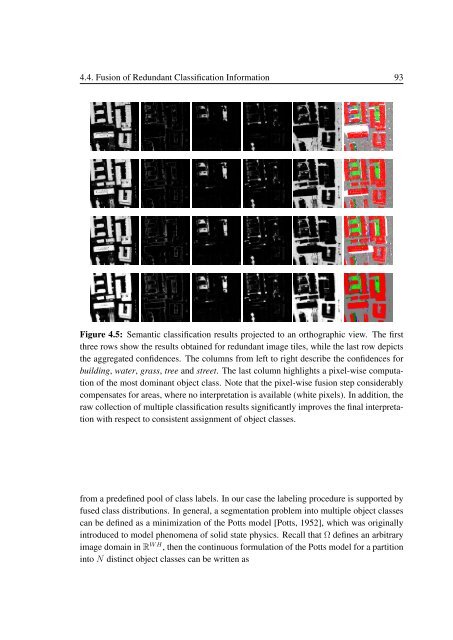Semantic Interpretation of Digital Aerial Images Utilizing ...
Semantic Interpretation of Digital Aerial Images Utilizing ...
Semantic Interpretation of Digital Aerial Images Utilizing ...
You also want an ePaper? Increase the reach of your titles
YUMPU automatically turns print PDFs into web optimized ePapers that Google loves.
4.4. Fusion <strong>of</strong> Redundant Classification Information 93<br />
Figure 4.5: <strong>Semantic</strong> classification results projected to an orthographic view. The first<br />
three rows show the results obtained for redundant image tiles, while the last row depicts<br />
the aggregated confidences. The columns from left to right describe the confidences for<br />
building, water, grass, tree and street. The last column highlights a pixel-wise computation<br />
<strong>of</strong> the most dominant object class. Note that the pixel-wise fusion step considerably<br />
compensates for areas, where no interpretation is available (white pixels). In addition, the<br />
raw collection <strong>of</strong> multiple classification results significantly improves the final interpretation<br />
with respect to consistent assignment <strong>of</strong> object classes.<br />
from a predefined pool <strong>of</strong> class labels. In our case the labeling procedure is supported by<br />
fused class distributions. In general, a segmentation problem into multiple object classes<br />
can be defined as a minimization <strong>of</strong> the Potts model [Potts, 1952], which was originally<br />
introduced to model phenomena <strong>of</strong> solid state physics. Recall that Ω defines an arbitrary<br />
image domain in R W H , then the continuous formulation <strong>of</strong> the Potts model for a partition<br />
into N distinct object classes can be written as















